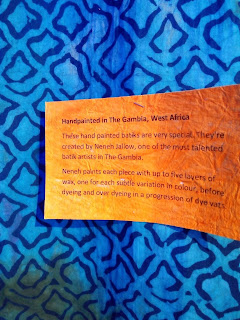A Tribute to Indigo, the Beautiful colour!Powerful dignified, and a beautiful colour for activating intuition capabilities. a Combination of Blue and Violet. Indigo is a natural pigment coming from plants.
At the Piramal Vaikunth Flower Show, Balkum, Thane, 10 and 11th December and 17, 18th December 2016. History, display or original hand made, hand painted traditional textiles, documentary film and of course a World of Flowers!
 |
| Documentary film |
 |
| Display Indigo Vaikunth Flower show |
 |
| Hand made hand painted Vaikunth Flower Show |
 |
| Ikat |
 |
| Batik Tribute to Indigo |
 |
| Blue Gold Vaikunth flower show |
 |
| Piramal vaikunth |
 |
| Mahatma Gandhi Vaikunth Flower show |
 |
| Entrance of Piramal Vaikunth Balkum Thane |
 |
| The Blue Gold Indigo Exhibit at Vaikunth flower Show |
 |
| Indigo Display History of Indigo Dyeing in Japan |
 |
| Wedding Cloth from java, display Exhibit at Vaikunth Flower show |
“Indigo is a
color that is traditionally regarded as a color in the visible spectrum, as well as one of
the seven colors of the rainbow:
the color between blue and violet.
Although traditionally considered one of seven major spectral colors, sources differ as to
its actual position in the electromagnetic
spectrum. Indigo is a deep and bright color close to the color wheel blue (a primary color in the RGB color space), as well as to some
variants of ultramarine.
The color indigo is named after
the indigo dye derived from the
plant Indigofera tinctoria and
related species. The earliest direct evidence for the use of indigo dates to
around 4000 BCE and comes from Huaca
Prieta , in contemporary Peru. Pliny mentions India as the source of the dye,
imported in small quantities via the Silk
Road. The Greek term for the dye was Ἰνδικὸν φάρμακον ("Indian dye"), which, adopted to Latin as indicumand via Portuguese gave
rise to the modern word indigo.El
Salvador has lately been the
biggest producer of indigo.
Indigo was actually a plant that
got its name because it came from the Indus Valley, discovered some 5,000 years
ago, where it was called nila,
meaning dark blue. And by the 7th Century BC, people starting using the plant
as a dye—the Mesopotamians were even carving out recipes for making indigo dye
onto clay tablets for record-keeping. By 1289, knowledge of the dye made its
way to Europe—when the Venetian merchant traveler Marco Polo reported on it.
But it wasn’t until 1640 when
demand started to pick up for indigo. Spanish explorers discovered an American
species of Indigo and began to cultivate the product in Guatemala. The English
and French subsequently began to encourage indigo cultivation in their colonies
in the West Indies. Indigo dye
could be made from two different types of plants—the indigo plant, which
produced the best results, and from the woad plant.
Isaac Newton introduced indigo as one of the seven base colors of his
work. In the mid-1660s, when Newton bought a pair of prisms at a fair near Cambridge, the East
India Company had begun importing indigo dye into England, supplanting
the homegrown woad as source of blue dye. Newton acknowledged that the
spectrum had a continuum of colors, but named seven: "The original or
primary colours are Red, yellow, Green, Blew, & a violet purple; together
with Orange, Indigo, & an indefinite varieties of intermediate gradations. He linked the seven prismatic colors
to the seven notes of a western major
scale as
shown in his color wheel, Having decided upon seven colors.Indigo is
therefore counted as one of the traditional colors of the rainbow, According
to Isaac Asimov, "It is
customary to list indigo as a color lying between blue and violet, but it has
never seemed to me that indigo is worth the dignity of being considered a
separate color. To my eyes it seems merely deep blue. ”(Google credit, Wikipedia)
 |
| Tribute to indigo at Vaikunth flower show |
 |
| Amazingly beautiful landscape garden |
Bright Violet, deep blue, vibrant, it is a more deepened
shade of blue. Has a lot for spiritual energy and used in traditional batik and
textiles till date. Loved by artists , especially spiritual healing artists. The
colour of healing the third eye, the chakra of creativity, the spiritual
chakra, the energy of awakening, enlightenment. Not only my favourite colour it
is a special colour close to my heart and my art, and it was great to learn about
the beginnings, history regarding this beautiful colour. My French Ultramarine
Blue, Cerulean Blue, Manganese Blue, Prussian Blues, All towards Indigo!
The most evolved, colour at the uppermost level of our chakra system. Strong Symbolism, Feng Shui, beautiful energy to attacrt wisdom, confidence, intuitive abilities, focus and control of mind and thoughts.
Thank you for coming by Razarts!
Your's The Red Pilgrim
Thanks a Lot Piramal Realty group for Such an Awesum Beautiful experience! God Bless!
The butterfly counts not months but moments, and has time enough. Rabindranath Tagore"
Thanks a Lot
All the Best from Rizwana!
Read more on Rizwana's Blog-




















No comments:
Post a Comment
Ask, Inquire, Question, Clarify Doubts, Share about The Hidden Power of Symbols in Art on Rizwana's Razarts Blog!